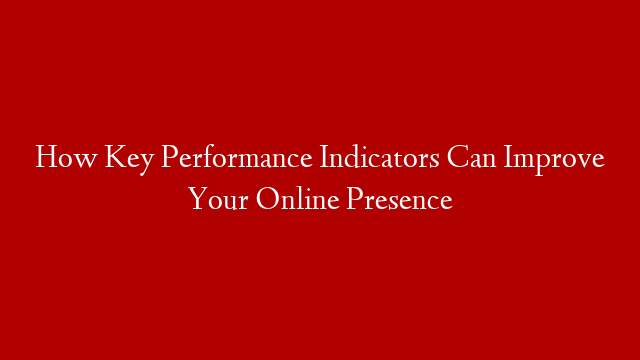KPI or Key Performance Indicator metrics translate complex measures into simple indicators, which allow decision makers to quickly and efficiently assess the situation and come up with an answer. For them to work smoothly in your business, you need to bear in mind a singularly key point – all KPI’s need to be actionable. Which means, they should report on the metrics that matter to your organization. While the decision maker might have the final say in deciding on which KPI’s to select (and which to reject), all department heads should be involved in suggesting strategic indicators that would work best for their department.
To understand which kind of KPI would work best for you, you first need to define the site you have. Note, if your company has a website which serves multiple functions, it may be more difficult to identify success measures for the site. Similarly, if your business has more than one website, each website should be treated as an individual entity. It’s also important to remember that KPI metrics should cover a broad spectrum of both financial and non financial goals.
The following are some of the more popular types of business websites we come across today:
Commerce Sites
In this kind of environment, the goal is to get customers to buy goods and services directly online. An example would be amazon.com or expedia.com
The KPI’s for this site is fairly simple to identify, as it tally’s with the site’s bottom line goal – to earn revenue. They should include the following:
- Conversion Rates – While there are multiple ways to measure conversion rates, the most common one is the order conversion rate, which is the ratio of visitors to orders, and the checkout conversion rates which is the ration of visitors who start the checkout process to orders.
- Average Order Value – This is the ratio of revenue for the site to orders, and it has a direct impact on the sites’ profit margin, so it’s an important measurement to consider.
- Customer Loyalty – The ratio of new customers to older one. Use this to track how many new customers you attract and how many loyal customers keep coming back.
- Search Engine Referrals – Search engines like Google, Yahoo and Bing,will send customers to your site. Do you know how many come from there and which search engines send the most visitors over?
Content Sites
Content sites generally rely on online advertising to bring in the revenue. Alternatively, they may be built to promote an offline venture. Either ways, their purpose is to attract the largest possible audience and keep them coming back. News sites like Cnn.com and ABCNews.com and sites like WebMd.com are examples of content sites.
The site’s goal is generally to bring in more visitors, thereby increasing the site’s ad revenue. If this is the case, the KPI’s should include:
- Unique Visitors and Return Visitors – This will give you a quantifiable idea as to how many visitors your site attracts, as well as measure the effectiveness of bringing back return visitors. It forms a large part of your customer loyalty strategy.
- New Visitor Percentage – The ratio of new visitors to return visitors and how you focus your energy can in large depend on who your site targets.
- Depth of Visit – The ratio of page view to visits. If your visitors appreciate your content, they spend time on your page and in the long run, increase your ad revenue.
- Duration of Visit – How long a visitor stays on site will also determine how your brand is perceived and in turn marketed. The longer the stay, the more it speaks of your brand’s effectiveness.
Lead Generation Sites
Typically sales sites fall in to this category. The idea is to get visitors to submit as much information (not too much, as that would put them off signing up in the first place), so that sales representatives can follow up with them.
KPI’s here can overlap with those outlined for an ecommerce site, however, there are other indicators. These include:
- Sales Conversion Rates – This refers to the number of leads which get converted into sales and it also takes into account sales campaigns that may be held. How does the conversion rate differ now? Another indicator could be the calls made by sales reps each day. How does that convert into leads? Is it worth the salary paid out?
- Cost per lead – What is the marketing and advertising cost your company has incurred, and how does it compare to the sales brought in?
- Single access ratio – Do your visitors go past the entry page to the buying page? If not, this might be another important indicator that your entry page needs to be stronger.
Support Site
The support site’s aim is to provide answers to its patrons. Forums work a similar manner, and a good example is that of Sears Community Page. The site may also be the customer service online presence for a business or service. Some of the KPI’s for such a site include:
- Customer Satisfaction Metrics – This is information collected through online surveys and response forms. Is the customer happy with your products and services? Would he continue to use them? Recommend them?
- Time spent onsite – This is of course a large indicator of how much the customer enjoys your site, uses it and returns to it. The goal is to make it as quick and easy to use as possible.
- Returns and complaints – Does the site receive a lot of complaints, negative feedback and comments, a request to return products? By measuring these, you get a good idea as to how your customers feel about your products and services.
While there are many free and paid for tools available, take your time to see how you can best identify, implement and track KPI’s for your own business.
© 2011 Usha Krishnan Sliva



